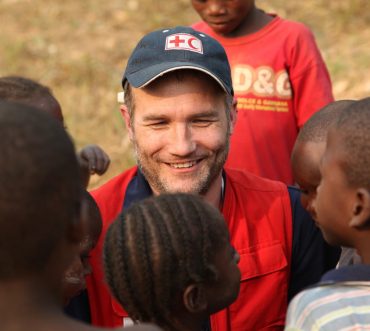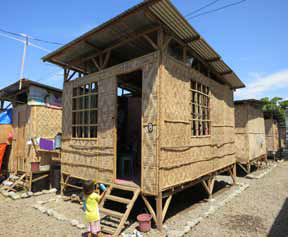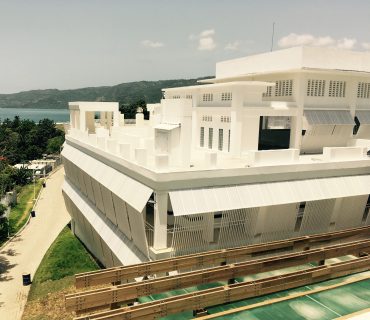
John Bleasby
Bring your construction skills to the world stage
Canadian ContractorThe Canadian Red Cross is looking for disaster ‘surge support’
When a disaster strikes somewhere in the world, the Red Cross/Red Crescent organization is quickly on scene to assist with emergency shelter, followed by longer term housing solutions. Currently the Canadian Red Cross is looking for skilled members to add to their roster of ‘surge support’. Could that be you? Are you an individual with an engineering, design or construction background willing to travel and help rebuild communities that have been virtually destroyed?
“We’re looking for a pretty broad range of individuals that work within the architectural, engineering and construction field,” Neil Bauman told Canadian Contractor. Bauman is a 50-year engineer based in New Brunswick who has spent the past 15 years as a lead project designer and manager all around the world with the Red Cross/Red Crescent. “We need people who understand structure, people who understand how things go together in a strong way,” he continued.

Neil Bauman (50) is a Canadian architect who has spent the past 15 years working around the world for the Red Cross/Red Crescent organization
Skills learned in Canada can be adapted to other areas of the world
The Canadian construction experience can be adapted even to the most remote and exotic locations. As Bauman explained, “We build trusses all the time for example, but out of bamboo. If you understand these principles and can communicate them, those are some of the skills we are looking for. Even drawing skills are needed — being able to take the concepts, detailing them on paper, and then communicating them to people who don’t speak English.”
Building shelters beyond the tents and tarpaulins used during the days immediately following a disaster is referred to as ‘transitional housing’. It’s a big part of most Red Cross relief efforts. Of course, each location has its own set of challenges. “Whether the mission is in Burkina Faso, the Philippines or Afghanistan, the process is pretty similar but the result may be very different,” said Bauman. “The availability of certain materials, the appropriateness of certain materials, the climate — all these things are very different.”
More than simply construction assembly
However, Bauman explained that there are many soft aspects to a project too. “There is communication with the communities and local authorities, and working with and training local labor, for example. A big part is creating community engagement and a feeling of ownership on the part of people inhabiting these transitional houses.” It starts with the construction team itself. Of the five people on a construction team, for example, three might be family members who will live in the unit itself.
Bauman explained how, after an initial training project with perhaps ten locals working on the first home, those ten trainees will then span out throughout the community and train others. The result is dozens of building teams, and completed units that ultimately number in the thousands.

Transitional housing like this example in the Philippines uses local materials like bamboo for both structure and walls. The design allows ventilation in hot climates.
It also brings up the notion of transitional housing and the adaptability of designs — decisions that are often made on site, not back at headquarters in Canada. “In some cases the transitional house can be transformed into something more permanent,” said Bauman. “That brings up the question of how durable a structure we need to provide. The question that arises is, ‘Can the design be modified in an effective and efficient way to turn it into a permanent dwelling.’” And of course, quality assurance is important, not only safe building practices but structural integrity and consistency.
The Red Cross is also involved with large and permanent infrastructure projects, Bauman explained. Hospitals, community health and recreation centres, and branch offices are on-going projects that can take years to complete. “Those construction projects have more of a development sense to them. They are involve poured concrete with rebar, and masonry infill.” Bauman said that such projects are well within the construction Canadian experience.
What is the time commitment?
Bauman has been with the Red Cross since 2005, and has obviously found a satisfying career there. He graduated as an architect in 1996 from Carleton University in Ottawa, and spent a number of years working with Canadian and U.S. architectural firms before settling in with the Red Cross. While this might first appear as a dramatic career change, he explained, “I feel I am using the same design and management muscles.”
The current recruitment drive doesn’t call for a similar fulltime shift in career direction, however. The Red Cross is looking of people who are, first and foremost, interested in international aid work, and wish to be added to the Red Cross registry. “We offer the people on our registry the training needed to become aid workers, and then give them the experience through deployments. This would be in addition to their regular day job.”

The Red Cross hospital in Jacmel, Haiti is one of several large construction projects undertaken by the Red Cross organization
How long would each deployment be? It’s contingent on the arrangements each individual can make with their employer. “If there is a big disaster somewhere, they will be the capacity from which we can draw. We call them ‘surge support’ — people we can call upon for a short period of time. The amount of time is subject to their availability and our need. Usually it’s between a few weeks and a few months. There are also positions that can last several years.”
Personal satisfaction that can’t be underestimated
There is, of course, the satisfaction of using one’s skill set in ways that have immense impact on people suffering from natural disasters. “Some of the things I’ve been able to witness has been extremely rewarding,” said Bauman. “Seeing communities go from utter devastation — being entirely wiped out — to their rebuilding, it’s really amazing!”
“Some of the very interesting parts of my work are the things you don’t expect,” continued Bauman. “We built a retention pond in Haiti intended to keep the water from flooding the rest of the community. It was a technical solution to retain the water, but the community later adopted it and turned it into community gardens. That was part of the organic nature of how the communities embraced something to make their lives better by using their own initiative. It’s very rewarding to see communities flourish after a complete disaster.”
Interested in learning more?
Check these links for the positions currently open…
Construction:
https://trr.tbe.taleo.net/trr01/ats/careers/requisition.jsp?org=CRCS&cws=1&rid=3924
Shelter & settlement:
https://trr.tbe.taleo.net/trr01/ats/careers/requisition.jsp?org=CRCS&cws=1&rid=3929
Water, sanitation and hygiene:
https://trr.tbe.taleo.net/trr01/ats/careers/requisition.jsp?org=CRCS&cws=1&rid=3930
…Or contact the Canadian Red Cross directly for more information:
www.redcross.ca/delegates
Got feedback? Make your opinion count by using the comment section below,
or by sending an email to:
JBleasby@canadiancontractor.ca
Follow John on Instagram and on Twitter for notifications about his latest posts

![]()

Leave a Reply